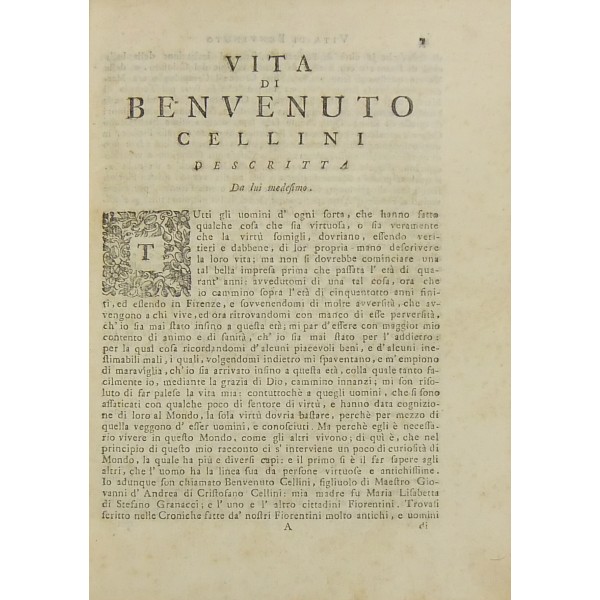Benvenuto Cellini died on 13 February 1571 in Florence. He was buried in the church of the Santissima Annunziata, in the Cappella di San Luca. The chapel belonged to the recently founded Accademia delle Arti del Disegno, of which Cellini was a member. Beside him, many artists are buried in its vault, including Pontormo, Franciabigio, Giovanni Angelo Montorsoli, and Lorenzo Bartolini.
After the completion of the Perseus in 1554, Cellini kept working for Cosimo I de’ Medici, but his career was partially shadowed by the rise of his rivals Bartolommeo Ammannati and Baccio Bandinelli. In addition to this, Cellini was imprisoned for assault in 1556 and charged with sodomy in 1557. The following year Cellini began writing his Vita. Composed in an immediate style, this autobiography gives a firsthand account of his singular career, spent between the Rome of Clement VII, the France of Francis I, and the Florence of Cosimo de’ Medici. Despite the boasting tone and the exaggerated claims (including the shooting of the constable of Bourbon and the Prince of Orange during the Sack of Rome in 1527), the Vita offers a vivid picture of the Renaissance age. It remained unpublished during Cellini’s lifetime, though contemporaries such as Giorgio Vasari and Benedetto Varchi knew of its existence and may have read it. The manuscript was eventually published in 1728. The first English translation appeared in 1771 by Thomas Nugent
During his last years Cellini worked on his treatises dealing with goldsmithing and sculpture, the Trattato dell’oreficeria and the Trattato della scultura.
Reference: Ettore Camesasca, “Cellini, Benvenuto.” Dizionario Biografico degli Italiani, Enciclopedia Treccani; Alessandro Nova. “Cellini, Benvenuto.” Grove Art Online. Oxford Art Online. Oxford University Press.
Further reading: Michael W. Cole, Benvenuto Cellini’s Designs for His Tomb, in «The Burlington Magazine», Vol. 140, No. 1149 (Dec., 1998), pp. 798-803; Rona Goffen, Renaissance Rivals : Michelangelo, Leonardo, Raphael, Titian,(2002); Michael W. Cole, Cellini and the Principles of Sculpture (2002).
Statue of Cellini, Piazzale degli Uffizi, Florence.
Benvenuto Cellini, Perseus, 1545-54, bronze, Loggia dei Lanzi, Florence.
First page of the Vita.



